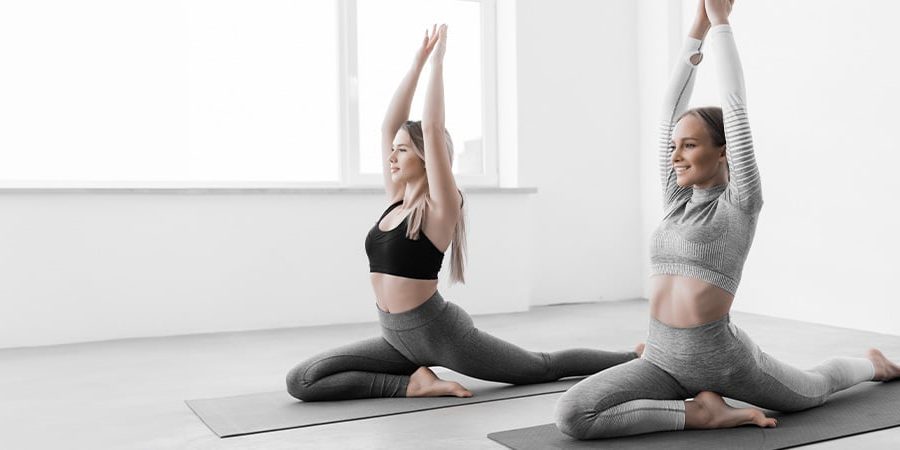Low back pain (LBP) is a pervasive issue affecting a significant portion of the population, often leading to discomfort, disability, and decreased quality of life. Its causes are multifactorial, stemming from anatomical, physiological, and lifestyle factors. This article aims to dissect common causes of low back pain, delve into the anatomy of such ailments, and explore the role of mat Pilates in prevention and management. Further, we present a periodised mat Pilates programme designed for fitness professionals to use one-on-one with clients suffering from low back pain.
Common Causes and Anatomy of Low Back Pain
Low back pain can arise from various anatomical structures, including intervertebral discs, facet joints, ligaments, muscles, and nerve roots. Common causes include but are not limited to:
- Muscular Strains: Often a result of heavy lifting, sudden movements, or prolonged poor posture, leading to muscle tears and spasms.
- Lumbar Herniated Disc: The jelly-like centre of a disc can break through the tough outer layer and irritate a nearby nerve root.
- Degenerative Disc Disease: Age-related changes in intervertebral discs, leading to reduced elasticity and height of discs.
- Spondylolisthesis: One vertebra slips forward over the one below it, often due to degeneration or stress fractures in the vertebral structure.
- Stenosis: Narrowing of the spinal canal, which can compress the spinal cord and nerves.

The Role of Mat Pilates in Low Back Pain Management
Several studies have explored the efficacy of mat Pilates in managing low back pain. Let’s discuss some key findings and methodologies:
- Comparative effects of Pilates on Chronic Low Back Pain: A study by Cruz-Díaz et al. (2017) compared 12 weeks of equipment-based versus mat Pilates in patients with chronic low back pain. Through a randomised control trial design, participants were assigned to either modality, with outcomes measured in terms of pain, function, and transversus abdominis activation. The study concluded that both forms of Pilates significantly improved these outcomes, attributing the success to improved core stability and muscular balance.
- Effectiveness in Chronic Nonspecific Low Back Pain: Another randomised controlled trial by Da Luz Jr et al. (2014) investigated the effectiveness of mat versus equipment-based Pilates. The study meticulously tracked disability and kinesiophobia outcomes over six months, demonstrating long-term benefits in reducing pain and disability through consistent Pilates practice.
These studies underscore Pilates’ potential to enhance core stability, improve spinal alignment, and increase muscle balance, all of which are crucial for managing low back pain.
A Periodised Mat Pilates Programme
For fitness professionals working one-on-one with clients experiencing low back pain, a tailored, periodised mat Pilates programme can be instrumental. The programme should progress from gentle foundational exercises to more complex movements, focusing on core strength, flexibility, and stability.
Weeks 1-4: Foundation and Stability
- Focus on basic Pilates principles: breathing, pelvic placement, rib cage placement, scapular movement, and head and cervical spine alignment.
- Exercises: Pelvic curls, spine twists, and single leg stretches.
Weeks 5-8: Strength and Flexibility
- Incorporate exercises that build on the foundational strength with increased complexity.
- Exercises: Swimming, leg pull front, and side kicks.
Weeks 9-12: Functional Integration
- Focus on exercises that mimic daily activities or specific sports movements to improve functional strength.
- Exercises: Pilates push-up, plank variations, and teaser.
Disclaimer: Before beginning any exercise programme, it is crucial for clients to seek medical approval, especially when dealing with chronic conditions like low back pain. This programme is intended to complement, not replace, professional medical advice and treatment.
Mat Pilates offers a promising approach to managing and potentially alleviating low back pain through targeted exercises that enhance core stability, improve muscular balance, and promote spinal health. Fitness professionals are encouraged to leverage the outlined periodised programme, adapting it to meet individual client needs and capabilities, always with a cautionary nod to medical guidance.
References
- Cruz-Díaz, D., Bergamin, M., Gobbo, S., et al. (2017). Comparative effects of 12 weeks of equipment-based and mat Pilates in patients with chronic low back pain on pain, function, and transversus abdominis activation. Complementary Therapies in Medicine. Click here to review the full research article
- Da Luz Jr, M.A., Costa, L.O.P., Fuhro, F.F., et al. (2014). Effectiveness of mat Pilates or equipment-based Pilates exercises in patients with chronic nonspecific low back pain: a randomized controlled trial. Physical Therapy. Click here to review the full research article
Learn Mat Pilates for Low Back Pain Management
Elevate your expertise and become a beacon of hope for those suffering from low back pain. Our meticulously designed Pilates Instructor Course offers an in-depth exploration into the transformative world of mat Pilates, providing you with the skills to deliver personalised, effective programmes. Dive deeper with our Level 4 Certificate in Low Back Pain Management, where cutting-edge science meets practical application, enabling you to address, alleviate, and prevent low back pain with confidence. Discover the potent benefits and methodologies underscored in our recent article on utilising mat Pilates for low back pain management, and see how these courses can empower you to make a profound difference in your clients’ lives. Embark on this journey at Pilates Instructor Course and Level 4 Certificate in Low Back Pain Management today. Get an extra £100 off your Pilates course at checkout. This weekend only!
Pilates Instructor Training Course – In-Person & Live-Virtual
Low Back Pain Management Course – Distance Study
